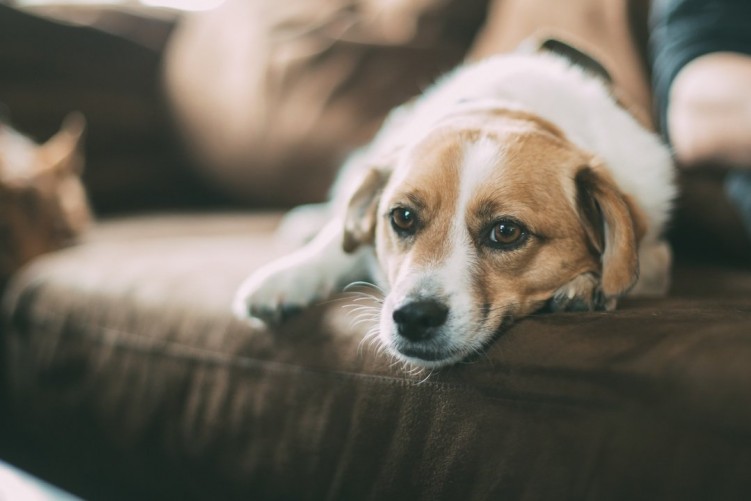All About Pet Insurance and How It Really Works
By epetsure
With nearly 180 million pets in the United States alone, and over $15 billion in veterinary care spending per year, it’s no small wonder that pet health insurance is a quickly growing industry. However, as with all insurances, the nuisances of how it really works and who’s behind it can get a little confusing for the average pet parent who isn’t familiar with “insurance speak.”
You’ve looked at all the pet insurance websites, you’ve reviewed the options, the policies, and the costs. But, maybe you’re still unsure about something, or have questions that can’t be answered by a pretty website or simple chart.
That’s why epetsure is here. To answer those questions, to take away any clouds of doubt, and to help you through the complicated, but necessary process, of ensuring your pet’s health and wellness.
So, here’s the skinny on everything pet insurance!
Who Regulates It
Unlike what most people think, pet health insurance is actually a form of property and casualty insurance, not health insurance. Pets are legally considered property and therefore pet health insurance is categorized under property insurance.
There are 3 different underwriters for property insurers:
Admitted Property and Casualty Insurance Companies. Most pet insurance companies fall under this category. A state’s Department of Insurance (DOI) examines an admitted underwriter’s policy before it can be sold. Any changes to a policy must also be approved by the state’s DOI before it is offered to the public.
The DOI approval process reviews the company’s policy rates and content to ensure fairness and honesty. They also make sure that the company is financially sound. Admitted insurance companies also pay into a state fund that is used to pay claims if a company were unable to meet their financial obligation. This fund is called the Guaranty Fund.
However, just because a pet insurance company is an Admitted Insurance Company, doesn’t guarantee that it has a good financial rating. You can check A.M. Best’s website to get a current financial rating of an underwriter.
Non-Admitted Property and Casualty Insurance Companies. If a pet insurance’s underwriter falls under this category, then the pet insurance policy has not been examined by the state’s DOI. Therefore, these underwriters are not required to follow state’s regulations. They also have more flexibility when it comes to the rates they charge, and they are not required to contribute to the states Guaranty Fund.
Lloyd’s of London. If a pet insurance company uses Lloyd’s of London as their underwriter, then they don’t fall under either of the above categories. Lloyd’s of London is a group of individuals and corporations that pool their money to insure risk. Most states have different legislation that pertains to Lloyd’s.
How It Works
Pet health insurance is a lot different from people health insurance. First of all, pet parents can choose their vet, regardless of what pet insurance company they have, or which policy they have. Next, it’s fair to say that premiums are relatively cheap, with the least expensive plan averaging around $10 per month and the most expensive topping off at around $100 per month. The third biggest difference is that unlike with human health insurance, pet insurance providers make the pet parent pay the vet first, and then they reimburse you a certain percentage, depending on your policy.
Pet insurance companies also don’t cover pre-existing conditions, enforce waiting periods during which any injury or ailment can fall into the category of a pre-existing condition for the life of the policy, and some have maximum payouts, either per payout, per year, or for the life of the policy.
Finally, since pet health insurance is a business, pet parents can expect their policy cost to increase in order to account for rising costs of health care, as well as, the age and heath condition of the pet.
Why Have It
As with all property insurance policies, the main point of having it is to ensure that your property can be fixed if it is ever damaged. However, having a pet is not quite the same as having a car or even a house. Most people say that property can be replaced, but can you really just replace your best furry friend the way you would your car? Pets have become emotional and integral parts of people’s lives, so when your pet gets sick or injured, you won’t relate it to your car getting a dent in a fender bender. You can drive your car just fine with a dent in the bumper, but your dog or cat in pain or suffering, will be more than any loving pet parent can endure.
With up to 90% reimbursement rates on policies, pet insurance companies can offer a sense of security for both you and your pet.
When To Get It
When do most people buy property insurance? At the time of the property purchase, right? So, when you buy a house, you buy home insurance. When you buy a car, your buy car insurance, right? Imagine trying to buy car insurance after you’ve been in an accident…you’d be laughed off the phone.
Why?
Because no one covers the cost of damages prior to you having a paid policy.
So, when is the best time to get pet insurance for your dog or cat? When you first get your pet. Whether you adopt or shop, chances are the pet will be the healthiest when you first get it. Furthermore, the sooner you get pet insurance for your pet, the sooner your pet will go through the waiting period, which means that any pre-existing conditions your pet may have will possibly slide through and be covered in the future.




